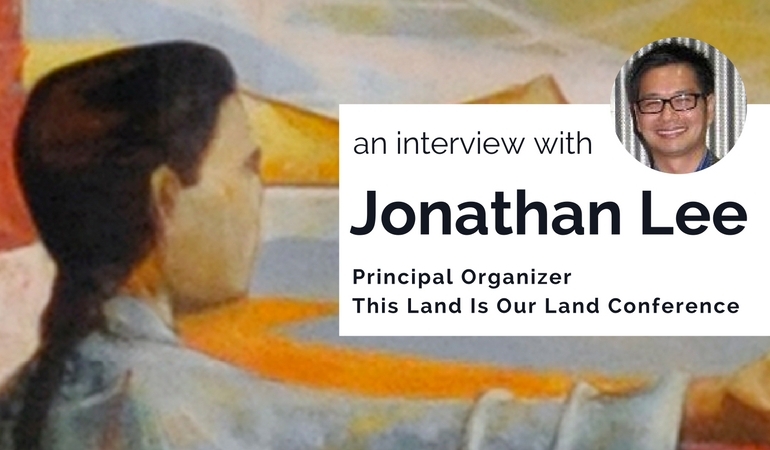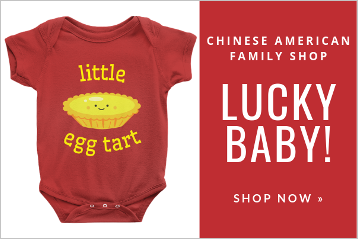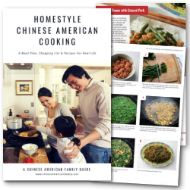This article is part of our Spotlight on Chinese American Leaders. Sign up for our newsletter to receive family-friendly activity, recipe and craft ideas throughout the year!
Leading academics, local historians and community activists will convene to examine the diversity of Chinese American experiences at this year’s This Land Is Our Land conference. Hosted by the Chinese Historical Society of America, the conference takes place from October 6-8, 2017, at the San Francisco Hilton.
On the eve of the conference, I checked in with the event’s lead organizer, Jonathan Lee, an associate professor of Asian American Studies at San Francisco State University. He reflected on his goals for the conference and the importance of studying Chinese American history at home and in the classroom.
Two years in the making, This Land Is Our Land seeks to boldly assert Chinese Americans’ place in the United States, while revealing the community’s diversity of experiences. Panels, keynotes and film screenings cover subjects spanning early Chinese American journeys and settlements to contemporary community health issues and social activism.
Jonathan shared his perspective about the conference’s relevance in today’s political environment, his approach to teaching Chinese American studies and ways parents can help children engage with family history. These are edited excerpts from our conversation.
Attend This Land Is Our Land from October 6–8, 2017, at the San Francisco Hilton. The closing night CHSA FUNdraiser benefits CHSA programming throughout the year that promotes the history and contributions of the Chinese in America.
It’s an interesting time to be holding this conference, with China and immigration once again at the forefront of the national consciousness. What’s on your mind as you kick off a conference about the Chinese American experience?
The theme of the conference is, “This Land Is Our Land,” and we wanted to make a declaration, along with the participants, that this land is indeed “our” land. Within the context of the anti-immigrant policies right now, it’s very fitting and critical to conduct a historical examination of the Chinese American experience to understand how we can respond to a xenophobic political climate. This isn’t the first time we’ve experienced xenophobia in America, after all the Chinese were the first ethnic group to be banned from immigrating to the United States with the Exclusion Act in 1882. So, it’s a pretty good time to reflect on Chinese American history as we search for solutions to meet the challenges of our present times.
Exploring Chinese American history can be difficult for families, even painful in some cases. What advice do you have for parents about sharing their family’s experience in this country with their children?
It depends on the child’s age. Children’s literature is a good way to introduce younger kids to Chinese American history, culture, legends and folklore. For older kids, one of the sad realities is that our K-12 system doesn’t offer a really robust ethnic studies program, though that’s beginning to change in places like Oakland and San Francisco. It’s a difficult history of exclusion and racism that needs to be introduced early at the right level and with the right pedagogy and curriculum. Personally, I didn’t have Chinese American history taught to me in school until college.
As a result, I think it’s critical for high school and college students to document their family stories through oral histories. This produces a greater appreciation for parents and grandparents, while giving history relevance in a child’s daily life. For example, one student realized their great-great-grandparents were paper sons and paper daughters. That’s an “a ha” moment, a personal experiential connection that we call a “high impact learning moment.” This weaving of the personal and the academic is a cornerstone of ethnic studies.
Given that very little Chinese American history is currently taught in grade school, what are the historical landmarks and moments you would share in a curriculum for American kids?
The transcontinental railroad would make a good national landmark. I would also highlight the early Chinese camps in a lot of California state parks, because seeing where people lived and what they were doing makes history more tangible. Similarly, let’s honor Chinatowns as historical landmarks and sites — don’t go to Chinatown for the touristy things, but do go sign up for a historical walking tour.
The list goes on. The immigration center at Angel Island, the Exclusion period, World War II as a turning point for the Chinese American community and then the start of ethnic studies programs in the late 1960s at places like San Francisco State and Berkeley.
Once students reach college, knowing perhaps only their family’s experience and a few lessons from school, what’s your approach as a professor to broadening a student’s knowledge of Chinese American history?
The majority of students, whether Chinese American or not, are in the course primarily because it fulfills a graduation requirement. For me, one of my bigger goals is not that they learn the specific data related to Chinese American history, but rather they pick up the themes of U.S. history vis-a-vis people of color. It helps them comparatively understand that their experiences are not isolated from Japanese Americans, Korean Americans, Filipino Americans, South Asians and, in today’s context, Muslim Americans. There’s a shared history of discrimination, oppression and disenfranchisement that’s not new.
We primarily analyze history through the lens of issues of race and racism. I hope students acquire a sophisticated understanding that race is a social construction built historically and politically, not a biological or innate thing set at birth. Understanding how ideas from the past were used to oppress people of color creates a greater awareness of the legacy of racism on the younger generation today.
To help inspire current students, what areas of the Chinese American history remain particularly unexplored and ripe for investigation?
I think the sky is the limit. Chinese American history, as a part of American history, is still just a footnote and we can learn so much more. Students may find it useful to start with personal family history and then go from there. For instance, one thing about the Chinese American experience is that it’s not just a domestic experience, it’s always been transnational. The conference will highlight the entire Americas region, north and south, as well as the Caribbean.
In closing, what do you hope attendees get out of attending the conference?
The presenters will explore many niches, so people can get a lot of different things. They can hear from acclaimed scholars of Chinese American history and meet community activists, filmmakers and local historians. We encourage people to start documenting Chinese American history within their own communities, to unpack that history and preserve it for the future. The conference will have something for everyone.
###
Your turn! How do you share Chinese American history in your family? What would you hope to learn at this conference?





Leave a Reply